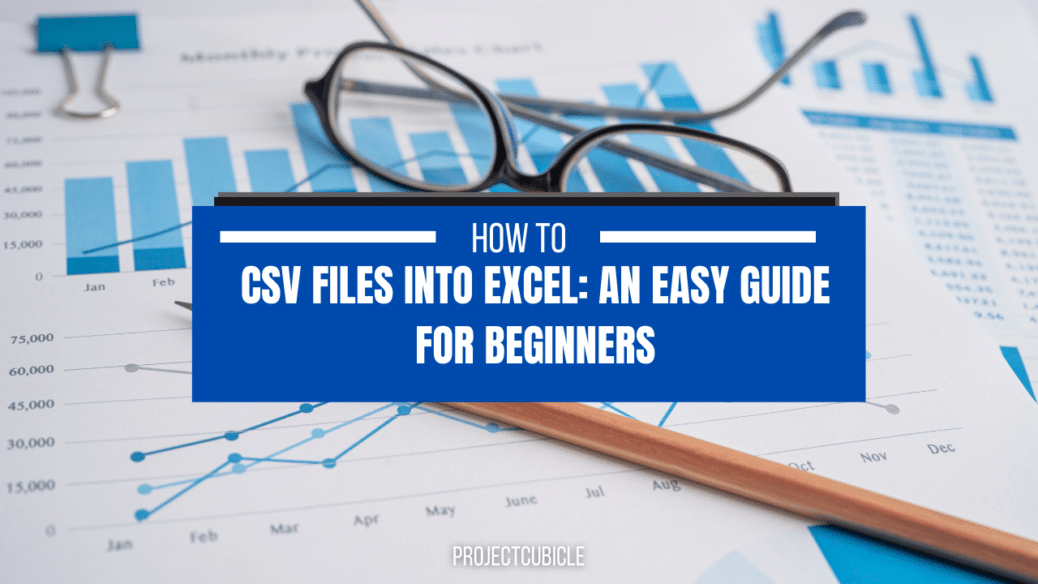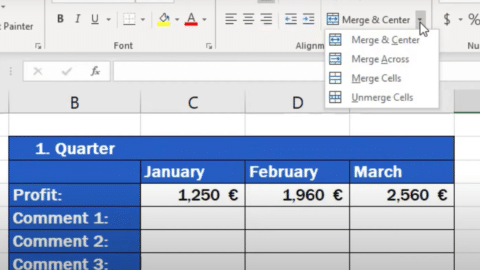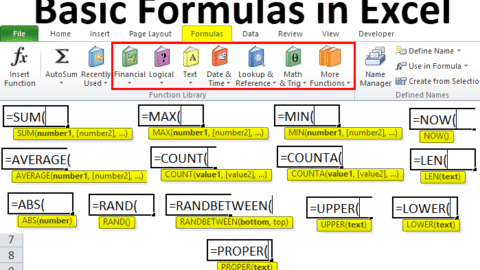CSV Files into Excel: An Easy Guide for Beginners
In today’s digital age, data is king. We gather and analyze data for a variety of reasons, from monitoring sales to tracking customer behavior. But when it comes to managing data, there are many file formats to choose from. One popular format is CSV, or Comma Separated Values. CSV files are easy to create and work with, making them a popular choice for data management. In this guide, we’ll show you how to import CSV files into Excel, one of the most widely used spreadsheet programs.
Table of Contents
Understanding CSV Files
Before we get started, let’s first understand what CSV files are. CSV files are a type of plain text file that stores data in a table format. The data is separated by commas, with each row representing a record and each column representing a field. CSV files are often used to transfer data between different applications, as they are easy to create and can be read by many different programs.
Creating a CSV File
To import a CSV file into Excel, you’ll first need to create one. Here’s a step-by-step guide to creating a CSV file:
- Open a blank text file in Notepad or any other text editor.
- Enter the data for each record, separating each field with a comma. Be sure to include a header row at the top of the file, listing the names of each field.
- Save the file with a .csv extension, such as “data.csv”. Be sure to select “All Files” as the file type when saving, to ensure the file is saved as a CSV.
Importing a CSV File into Excel
Now that you have a CSV file, you can import it into Excel. Here’s how:
- Open a new or existing Excel workbook.
- Click on the “Data” tab in the ribbon.
- Click on the “From Text/CSV” button in the “Get & Transform Data” section.
- Navigate to the location where you saved the CSV file and select it.
- In the “Text Import Wizard” window, select “Delimited” as the file type.
- Choose the delimiter used in your CSV file, which is typically a comma. You can also choose other delimiters, such as a semicolon or tab.
- Preview the data to ensure it’s imported correctly, then click “Load” to import the data into Excel.
Cleaning Up the Data
Once the data is imported into Excel, you may need to clean it up before you can use it. Here are some common tasks you may need to perform:
- Removing duplicates: Use Excel’s “Remove Duplicates” feature to eliminate duplicate records from your data.
- Filtering data: Use Excel’s “Filter” feature to display only the records that meet specific criteria.
- Sorting data: Use Excel’s “Sort” feature to sort your data by one or more columns.
- Formatting data: Use Excel’s formatting tools to make your data easier to read and understand.
Saving Your Work
After you’ve imported and cleaned up your data, you’ll want to save your work. Here’s how:
- Click on the “File” tab in the ribbon.
- Click on “Save As”.
- Choose a location to save the file and give it a descriptive name.
- Select “Excel Workbook” as the file type.
- Click “Save” to save your work.
Conclusion
Importing CSV files into Excel is a simple process that can save you a lot of time and effort. By following the steps outlined in this guide, you can quickly and easily import data from a CSV file into Excel and begin analyzing and managing your data. With a little practice, you’ll be able to manipulate and clean up your data in Excel, making it easier to understand and work with.
Remember, CSV files are a great way to transfer data between different applications, so knowing how to import them into Excel can be a valuable skill. With Excel’s powerful data management tools, you can quickly and easily turn raw data into actionable insights.
FAQs
- What programs can read CSV files?
- Many programs can read CSV files, including Excel, Google Sheets, and OpenOffice Calc.
- What is the difference between a CSV file and an Excel file?
- CSV files are a type of plain text file that stores data in a table format, while Excel files are spreadsheet files that can contain multiple sheets, formulas, and formatting.
- Can you import a CSV file into Excel on a Mac?
- Yes, the process is the same as on a PC.
- Can you import a CSV file into Excel if it has more than one sheet?
- No, CSV files can only contain one sheet of data.
- Can you edit a CSV file in Excel?
- Yes, you can edit a CSV file in Excel, but you’ll need to save it as an Excel file first.
In summary, importing CSV files into Excel is a straightforward process that can help you manage and analyze your data more effectively. By following the steps outlined in this guide, you can quickly and easily import and manipulate your data in Excel. So next time you have data in a CSV file, don’t hesitate to import it into Excel and start exploring! You can read How to Control Charts in Excel: A Comprehensive Guide to learning more about Excel. You can also check the other content.
Hello, I’m Cansu, a professional dedicated to creating Excel tutorials, specifically catering to the needs of B2B professionals. With a passion for data analysis and a deep understanding of Microsoft Excel, I have built a reputation for providing comprehensive and user-friendly tutorials that empower businesses to harness the full potential of this powerful software.
I have always been fascinated by the intricate world of numbers and the ability of Excel to transform raw data into meaningful insights. Throughout my career, I have honed my data manipulation, visualization, and automation skills, enabling me to streamline complex processes and drive efficiency in various industries.
As a B2B specialist, I recognize the unique challenges that professionals face when managing and analyzing large volumes of data. With this understanding, I create tutorials tailored to businesses’ specific needs, offering practical solutions to enhance productivity, improve decision-making, and optimize workflows.
My tutorials cover various topics, including advanced formulas and functions, data modeling, pivot tables, macros, and data visualization techniques. I strive to explain complex concepts in a clear and accessible manner, ensuring that even those with limited Excel experience can grasp the concepts and apply them effectively in their work.
In addition to my tutorial work, I actively engage with the Excel community through workshops, webinars, and online forums. I believe in the power of knowledge sharing and collaborative learning, and I am committed to helping professionals unlock their full potential by mastering Excel.
With a strong track record of success and a growing community of satisfied learners, I continue to expand my repertoire of Excel tutorials, keeping up with the latest advancements and features in the software. I aim to empower businesses with the skills and tools they need to thrive in today’s data-driven world.
Suppose you are a B2B professional looking to enhance your Excel skills or a business seeking to improve data management practices. In that case, I invite you to join me on this journey of exploration and mastery. Let’s unlock the true potential of Excel together!
https://www.linkedin.com/in/cansuaydinim/










